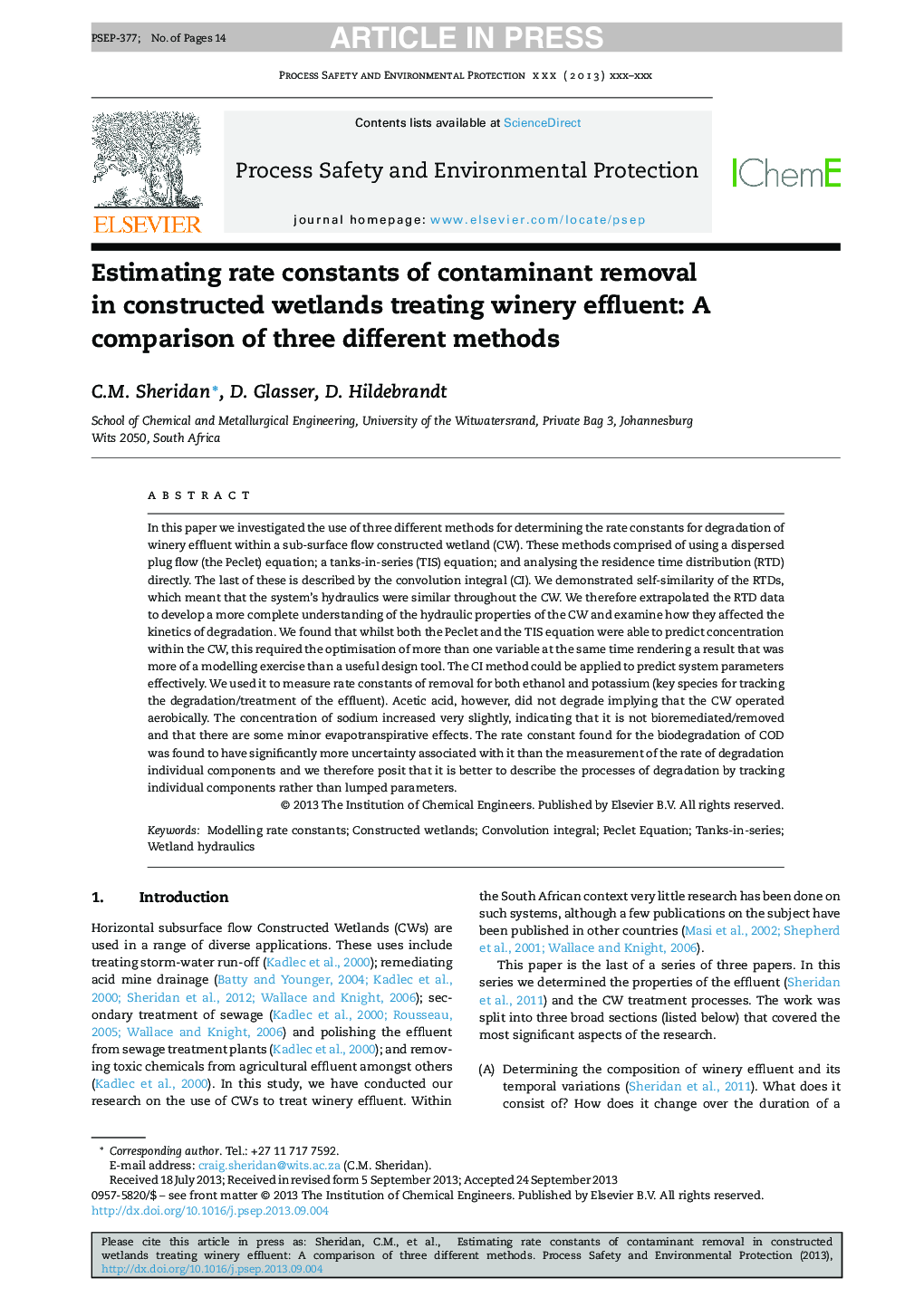| کد مقاله | کد نشریه | سال انتشار | مقاله انگلیسی | نسخه تمام متن |
|---|---|---|---|---|
| 10373936 | 878567 | 2014 | 14 صفحه PDF | دانلود رایگان |
عنوان انگلیسی مقاله ISI
Estimating rate constants of contaminant removal in constructed wetlands treating winery effluent: A comparison of three different methods
ترجمه فارسی عنوان
تخمین سرعت ثابت حذف آلاینده در تالاب های ساخته شده در پساب شریان کارخانه: مقایسه سه روش مختلف
دانلود مقاله + سفارش ترجمه
دانلود مقاله ISI انگلیسی
رایگان برای ایرانیان
کلمات کلیدی
موضوعات مرتبط
مهندسی و علوم پایه
مهندسی شیمی
بهداشت و امنیت شیمی
چکیده انگلیسی
In this paper we investigated the use of three different methods for determining the rate constants for degradation of winery effluent within a sub-surface flow constructed wetland (CW). These methods comprised of using a dispersed plug flow (the Peclet) equation; a tanks-in-series (TIS) equation; and analysing the residence time distribution (RTD) directly. The last of these is described by the convolution integral (CI). We demonstrated self-similarity of the RTDs, which meant that the system's hydraulics were similar throughout the CW. We therefore extrapolated the RTD data to develop a more complete understanding of the hydraulic properties of the CW and examine how they affected the kinetics of degradation. We found that whilst both the Peclet and the TIS equation were able to predict concentration within the CW, this required the optimisation of more than one variable at the same time rendering a result that was more of a modelling exercise than a useful design tool. The CI method could be applied to predict system parameters effectively. We used it to measure rate constants of removal for both ethanol and potassium (key species for tracking the degradation/treatment of the effluent). Acetic acid, however, did not degrade implying that the CW operated aerobically. The concentration of sodium increased very slightly, indicating that it is not bioremediated/removed and that there are some minor evapotranspirative effects. The rate constant found for the biodegradation of COD was found to have significantly more uncertainty associated with it than the measurement of the rate of degradation individual components and we therefore posit that it is better to describe the processes of degradation by tracking individual components rather than lumped parameters.
ناشر
Database: Elsevier - ScienceDirect (ساینس دایرکت)
Journal: Process Safety and Environmental Protection - Volume 92, Issue 6, November 2014, Pages 903-916
Journal: Process Safety and Environmental Protection - Volume 92, Issue 6, November 2014, Pages 903-916
نویسندگان
C.M. Sheridan, D. Glasser, D. Hildebrandt,
